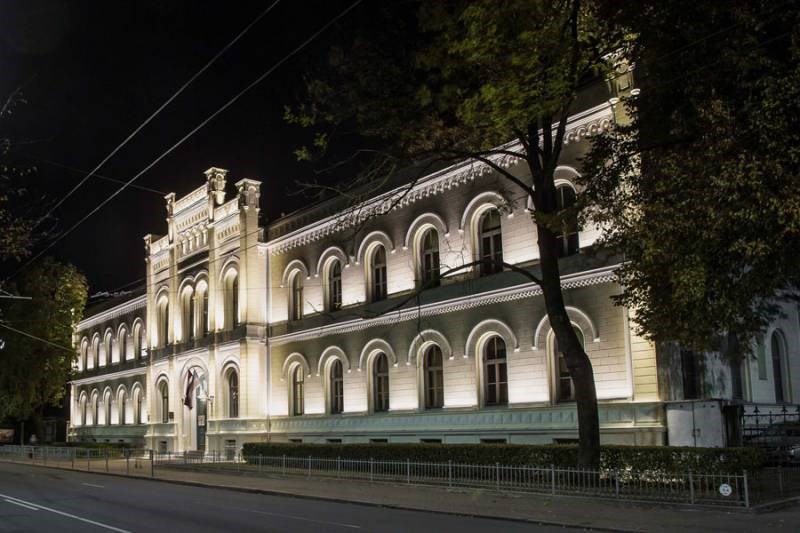The oldest school in the Baltic states was relocated in 1874 in a new building designed by one of the most popular Latvian architects at those times, Johann Daniel Felsko. Urban planner and Riga’s chief architect, Felsko belonged to the first generation of Historicist architects, who redeveloped the centre of Riga in the 19th century in a period of flourishing growth and steady commercial expansion of the Baltic city. His four decades of creativity introduced Neo-Gothic, Neo-Renaissance and Rundbogenstil (round-arch style) into the biggest Baltic port city of the Russian Empire. Author of several schools, churches, hospitals and urban residential buildings, Felsko was inspired in his artwork by a rather wide spectrum of the formal elements of Eclecticism style.
A well-balanced harmony of architectural styles can be found in the State Gymnasium No.1, whereas its beautiful façade recalls a straightforward neo-Renaissance style dominated by the Prussian Rundbogenstil, respectively spotted in the central main entrance and in the recurring theme of round-arched windows of the right and left wings of the building. Neo-Renaissance was a very common style for educational institutions, as Renaissance was associated with the revival of science and knowledge. Another popular style in Latvia and in the areas under German influence was the Rundbogenstil (round-arch style), a German form of Neo-Romanesque style characterized by round window arches, which delivers a harmonious layout to façades through a natural repetitiveness to architectural features.
